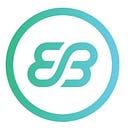Love Your Customers by Investing in Your Employees
Last week I got to kick off Valentine’s Day weekend at the Customer Love Summit in Boston and I got to see some of my favorite people along the way (Trish Fontanilla, Felicia Jadczak, and zarla ludin, to name a few).
To start, the Customer Love Series is focused on two types of customers: your employee and the person consuming your product/service. Happy employees create a ripple effect — the happiness is infectious among other employees and customers can feel it, too. As Director of Operations at Echobind, our employees are my customers, which means I’m constantly trying to support them, make sure they’re happy and that they have everything they need to be successful. In short, one of my primary focus areas is the Echobind employee experience.
Employee Experience is something companies invest in (whether they do so strategically or not), and there’s data to back up the value of creating an excellent employee experience. Employee performance is better, customer experience is better, and profit and Revenue feel the love, too.
When we talk about Employee Experience, many people think about ping pong tables and bean bags in the office, free lunch Fridays, etc. These are perks, and while they might contribute to employee experience, they don’t alone define it. So what does? The short answer, a lot of things. But they can be generally broken up into three buckets:
Benefits and perks that drive real value.
Sure a foosball table in the office is fun, but what value is it driving for your employees? If you have to pick between parking or public transportation subsidies to help your employees get to and from work or endless snacks, ask yourself which is really going to move the needle for your employees?
The same question applies to remote companies, only we’re working in a different framework. To make sure we’re truly driving value, we survey our team at least once a year. We give them $100 to allocate across a dozen or so benefits and perks to get a pulse on what our team wants to see and what they really value. It’s amazing to see the results that come back. Then we share a summarized view of those results and apply what we’ve learned in tweaks to the upcoming year’s benefits and perks offerings.
Activities that create satisfied and engaged employees.
This is an interesting bucket, especially for remote teams. How do you make sure people are satisfied and engaged? How do you track that over time and triage if you see a dip? We invest (dollars and time) into tools and platforms to help people collaborate, to set and track their professional goals, and to keep open communication. We also use Zoom meetings with a camera on policy to see each other on a regular basis (even if just virtually). For 2020, we’ve also rolled out a strategy for conferences to send more people when we’re sponsoring or someone is speaking. We recognize that our team doesn’t get to meet up in person often, so we’re thinking creatively to solve for that beyond our annual team summit.
Another way to keep employees satisfied and engaged is to recognize their hard work. This can be through an employee of the month announcement, a kudos channel in Slack, or any other medium that makes sense for your team. We’re all out here hustling, and it takes two seconds to share that you appreciate when someone has gone an extra mile for you, for the team, or for the customer.
Bottom line is, do what works for your employees and for your company — there’s room to get creative. Ask for feedback from your team and pivot if you’re not seeing the results you expect to see.
A productive work environment with a complete toolset.
This is critical and can be successfully achieved in a bunch of ways. One of the speakers showed a picture she’d snapped of a new hire’s desk before they arrived. It was decked out with a bunch of things like a new laptop and monitors, some company swag (a T-shirt, a water bottle), and a fresh notebook. And Trish Fontanilla made the comment that when she was setting up for a new hire, she always liked to order a small run of business cards to show that person how excited you are they’re on the team. But apart from the swag, making sure a person has everything they need to effectively do their job is key to employee experience, especially on that first day when you want to start off on the right foot.
All in all, there’s so much that goes into Employee Experience, there is no right way to do it, and there is definitely no plug-and-play formula.
Also, a little love for the organizers. They assembled an incredibly diverse speaker set. There were men, women, people of color, and disabilities represented on the stage. Industries included arts, consumer tech, non-profit, and consulting. The customer love theme seamlessly tied everyone together and provided the audience with a wide variety of stories, perspectives, and insights. If you’ve ever organized an event, a panel, or conference, you can appreciate how difficult it is, and the Customer Love Series team pulled it off.
Contributor’s Bio
Sarah is Director of Operations at Echobind, a design and software agency. She’s a Wellesley College alum and Babson MBA with a career that spans banking, tech, workforce development, e-commerce, and non-profits. She sits on the Board of Hack.Diversity.

